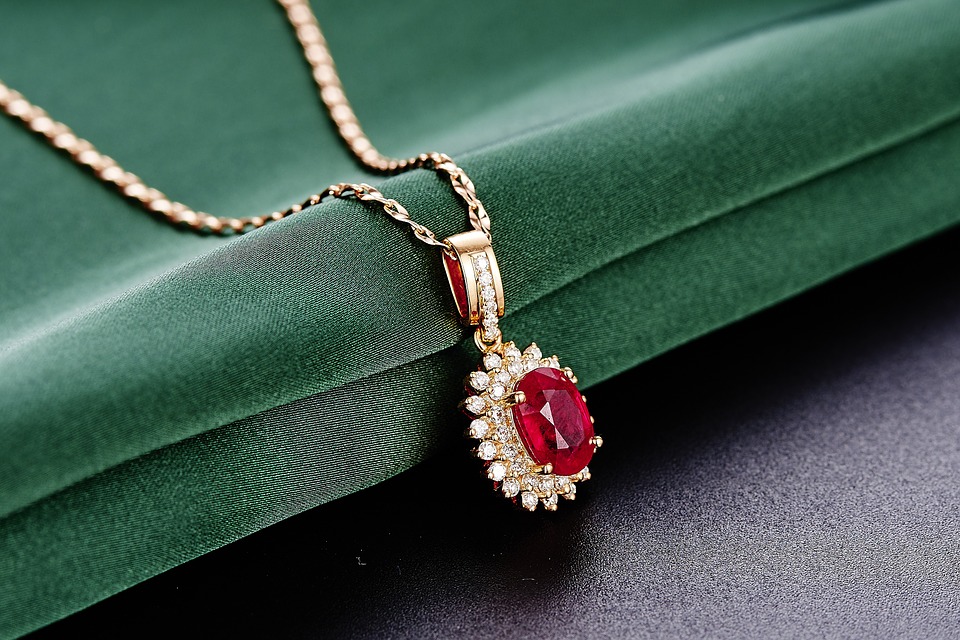Ruby comes from the Latin word ruber, which means red. Ruby is one of the five cardinal gems besides sapphire, diamond, emerald, and amethyst. Cardinal gems are those gemstones that have been considered precious for ages due to their rarity and religious usage.

The British royal family has a special inclination for ruby. Queen Elizabeth II has a ruby tiara that contains 96 rubies. The rubies were gifted to her by the Burmese people during her wedding. The queen also has a ruby necklace in her collection. Many engagement rings in the royal family were made of ruby stone.
Ruby is an expensive gemstone. Depending on their originality and authenticity ruby gemstones have garnered interest in famous auctions. The color and size of ruby can be the determining factors in getting a good price during any famous auction. Determining the quality of ruby gemstones depends primarily on factors like color, cut, and size.
Color
The most significant aspect in determining the value of a ruby is its color. The finest and purest ruby would usually have a bright and vibrant red color. Some ruby gemstones have a purplish or orangish color. However, in the gemstone market, rubies with orange or purple tinges are given lesser value.
The redness of the ruby should not be either too dark or too light. If the color is too dark then it affects the brightness of the stone whereas if it is too light then the stone is often considered as a pink sapphire and not ruby. The perfect color of the ruby is supposed to be like a fresh drop of blood.
The sunrise ruby that has the color of pigeon’s blood is considered the most expensive ruby in the world. It was found in Burma and has the perfect red color. Overall Burmese pigeon blood rubies are considered the best.
Clarity
Rubies usually have some inclusions. These mineral inclusions are known as needles. These needles appear in various shapes and sizes. They can be long, slender, or short. They can also be woven tightly together. When needles are present in intersecting groups they are called silk.
The value of ruby depends highly on the presence of these inclusions. If the needles are prominent it decreases the value of the ruby. Inclusions ideally reduce the brightness of the gemstone and thus automatically its value also gets reduced. However, some needles actually help to increase the value of the gemstone.
A rutile silk inclusion can cause light to scatter and help the ruby look less dark and make its appearance bright and shiny. This gives the ruby a softer appearance and allows light to scatter all over the crown. Some needles create a star-like structure inside the stone. This star effect is called asterism.
Some needles are composed of other minerals and small crystals. They create a color zone within and often appear like a fingerprint. However, large inclusions diminish the value of the ruby. They reduce the brilliance, transparency, and even durability of the ruby, especially in loose gemstones.
Cut
Rubies are mostly found in crystals. Cutters try to conserve the shape and weight of the crystal and cut accordingly. The most common cut found in ruby is hexagonal. The hexagonal shape can be found in a flat or elongated shape. To retain the original shape of the crystal, rubies are also often cut in the shape of an oval.
The crown is cut in the shape of a kite with triangular facets. In large and high-quality crystals the most common cuts are round, triangular, emerald-cut, and pear. However, these are rare. The presence of other colors in crystals is known as pleochroism. This also determines the cut of the crystal.
Cutters often cut the ruby in a shape that minimizes the presence of orange and purple color and makes the ruby appear red, bright, and shiny. However, this is only possible with large crystals. With smaller crystals, there is a risk of losing too much weight in cutting sharp.
Size and Weight
Rubies are usually below one carat. Fine quality rubies are rarely found above one carat. However, commercially produces rubies can be found in a wide range of shapes and sizes. As the ruby increases in size, the price per carat also goes up.
Heat Treatment
Heat treatment is a common commercial practice to improve the appearance of rubies. It improves both clarity and color. Many gemstone dealers treat rubies with heat and then sell them at higher prices claiming them to be natural. Before buying a ruby stone, it is important to find out if the stone has undergone heat treatment.
We hope these aspects can help you buy the perfect Ruby gemstone. If you know of any such factors, please let us know.



